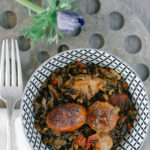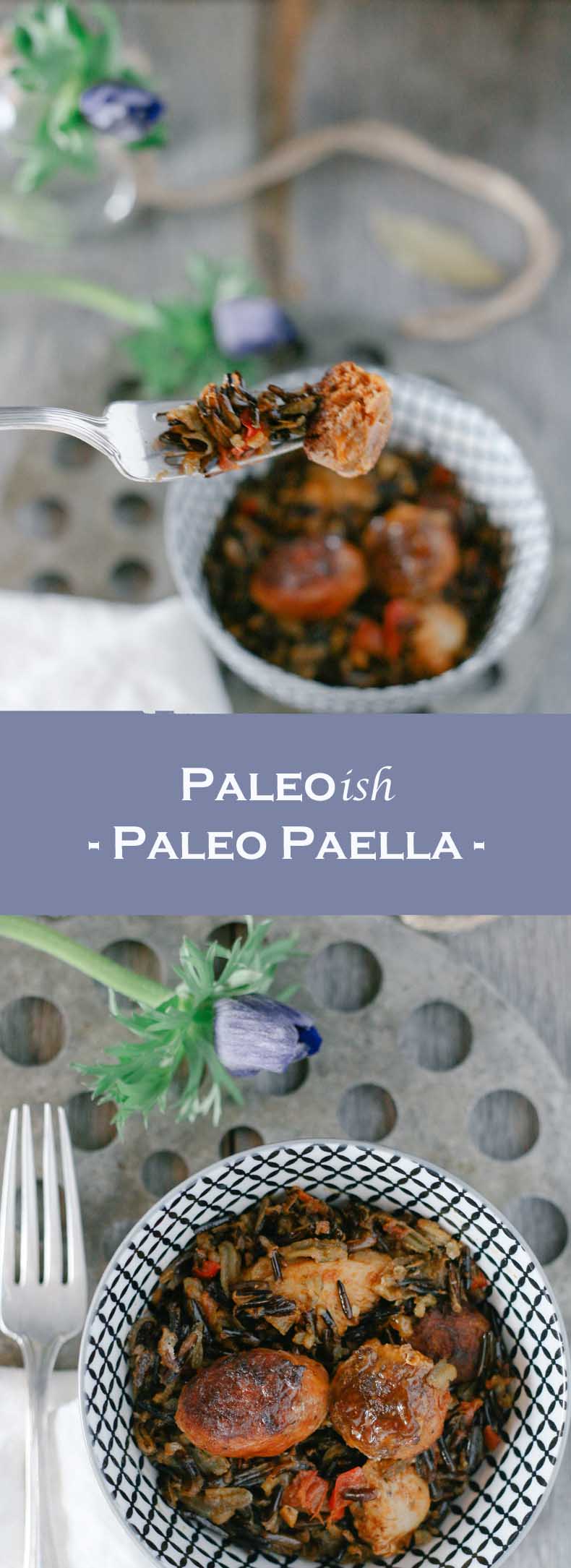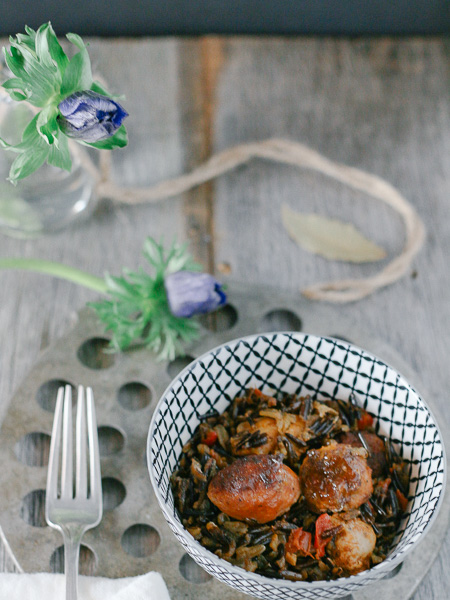
Hello all!!! How were your weekends/how were those first couple of weeks back at work/school?! I actually ended up with a three day weekend my first week of stage. Woot woot! Honestly, that’s probably the only reason I got my post up that week because my new stage schedule is a little bit limiting on the free time thing (not that I really had free time before…).
My new stage is pretty cool guys! Like, really cool! I feel hopelessly inadequate all the time which is, unfortunately, par for the course when you’re in physio school. Of all the things they teach us, we will use about 10% of it. And that 10% is about 2% of what we actually need to know if we want to work in an Ortho Private clinic after graduating. The rest we’re supposed to learn in stage and over the years of practicing. (Sorry if I blew that secret wide open fellow physios who have just graduated or are about to graduate and are looking to go into private practice…). Obviously, feeling inadequate is not an ideal situation, but, I’m really enjoying being surrounded by physios I hope to one day be half as good as.
The clinic I’m working in is one that people tend to go to when they have particularly complicated ortho-related (i.e. musculo-skeletal) cases and need a more sensitive diagnostic eye. All of the physios in the clinic are amazing; not only in how they treat, but also in their attention to details in body language, movement, and communication. Half of the fun of being there is learning how to extract the actual, often semi-subliminal, meaning of words uttered in passing. If there is one thing I’ve learned so far, it’s that anything said in passing is a) not mentioned in passing at all, and b) probably more important than the rest of what the patient is talking about. Part of the physio’s job is then to tease out the meaning in these words and determine their relevance to the patient’s treatment plan or prognosis.
I’m also loving the huge range of issues that I’m being exposed to. I’ve seen several patients with the same diagnosis on paper, but each exhibiting different limitations in their day-to-day life as a result. THIS is why physio school can only teach you so much. Every one is built differently. A given injury will therefore affect each individual differently, leading to compensations for their specific loss of function.
When a patient walks through the door, the physio’s job is to assess where and how THAT individual is limited, and set a goal to decrease their limitations and increase function. This is the stuff they tell us in school. It has always made sense to us conceptually. But it didn’t REALLY make sense to ME until I spent 3 weeks observing patients. So even if the panoply of overall techniques the physio uses are more-or-less the same from patient-to-patient, where and precisely how the techniques are applied is different between them.
Newho…I won’t go into more detail than that because I’m sure I’ve bored you all half to death by now. Suffice to say, I’m learning a lot and am REALLY hoping that by the end of my stage, I’ll feel slightly less hopelessly inadequate. I can say that by the end of week 3, some things are starting to sink in…I think…
Meanwhile, on the cooking side of things, I’ve accomplished two utterly amazing things in the past two weeks!!! If you’ve been following my Insta-feed, you’ll know that I got Eva Kosmas Flores’ book, “Adventures in Chicken” over Christmas. Of all the cookbooks I asked for for Christmas (and there were a lot), this was the one I wanted most. I have now adapted three recipes from it and have loved them all. I’ve also barely had to make any changes taste-wise. (Getting rid of the dairy and flour will always have to happen for me, of course, but I’ve more or less kept the other parts of the recipe the same).
One of the recipes I’ve adapted is Eva’s SAMOSAS (or Mosees as a friend and I call them)!!!!! I haven’t had Mosees in YEARS and these were probably the best Mosees I’ve ever had taste-wise!!!! I have to work a bit more on the process of flattening the dough to get it thinner while maintaining it’s workability, and I want to test a couple of flavour combinations with the filling (just ‘cos that’s what I do). Once I do, they’ll become a staple in my repertoire for sure! I may then share my adapted recipe with you guys so that all culinary lepers (and non-) may enjoy these wonderful crispy carb-laden morsels.
Also, after several attempts to find a tamarind sauce that I like, I finally hit on the right recipe. After all, what are Mosees without tamarind sauce?!
A second thing that I made from Eva’s book was her Tikka Masala. I changed this recipe in a couple of ways taste-wise and may still tweak it; not because her version isn’t delicious. It’s more because I think people have VERY particular things that they like about specific Indian dishes. I can’t tell you how many different Indian restaurants I’ve been to over the years, and none of them have made Butter Chicken the same way. I realize this may seem like a “no sh*t Sherlock” statement. Restaurants should be putting their own spin on their versions of classic ethnic dishes, right?
But I don’t mean the difference between one Italian restaurant using lemon juice to add a twang to their marinara while another uses balsamic, or one restaurant adding carrots to their bolognese while the other doesn’t (by the way…carrots in pasta sauce…nasty). I mean HUGE flavour differences between restaurants such that the only thing classifying the dish in front of me as ‘Butter Chicken’ is the title on the menu.
I also realize that different regions of India may have different spice blends that they use, but I still don’t feel like that entirely accounts for the differences I’ve seen and tasted. Indeed, I went to one place that served Butter Chicken without any tomato in it whatsoever, and it was sweetened with Maple Syrup!!!! It also had almonds in it. To me, that screams Canadian Korma, not Butter Chicken. But that’s what they listed as Butter Chicken. So yea…long story short, I’m going to tweak that Tikka Masala recipe a bit to get it less smoky, and slighly sweeter, and I’ll thoroughly enjoy the process as I go along because I LOVE LOVE LOVE Indian food! (Can’t you tell?) Even when I completely banjax the recipe, it’s still tasty enough…as long as I have Naan to scoop it up.
This brings me to the ACTUAL second cooking accomplishment that I mentioned above (that whole Butter Chicken thing was just window dressing). You see, when I made the Tikka Masala, I, of course, had to attempt to make Naan. Over the years (including the years I was still eating wheat), I’ve attempted to make Naan…many many many times. None of these attempts resulted in anything even remotely close to the soft and pillowy, butter-soaked flat bread I would get in restaurants. More often than not, I would end up with a very flat, rock hard, burnt-in-the-thin-parts-raw-in-the-thick-parts pizza-ish crust. Clearly, there was something about the recipe that was eluding me. However, this past weekend, I DID IT!!!! Pillowy, slightly burnt (in all the good ways) Naan!
Now, I’m not going to lie to you and say that I think that a gluten-tolerant Indian with their own tandoor oven would toss their recipe out for mine. BUT I don’t think they would hate it. AND considering there’s no wheat, milk, or butter in it and there’s definitely no tandoor involved, I’m gonna take my pillowy Naan-ish bread and run with it! This recipe will be shared with you guys for sure! Perhaps, when I perfect a curry recipe that I want to serve with it…or maybe not. I’m thinking of making Chili this weekend and am wicked tempted to make the Naan again just to go with it…hmmmm…
But I’ve digressed…A LOT… The real reason I’m posting today is to share with you another cooking accomplishment of mine from a few months ago…Paella!!!! And if that’s not awesome enough, it’s Paleo Paella!
For those of you who didn’t know this, wild rice is actually a seed! This means that not only can I eat it, but it makes this dish Paleo (and even more Paleo if one uses coconut oil instead of olive. But I don’t go THAT far with Paleo foods)! Le woot!
Now…I make Paella without any seafood in it, so I’m not sure if it entirely counts as traditional Paella. But I’m also not using rice, so I think it’s safe to say that tradition went out the window long before this post even started.
The first time I made Paella, I was 18 and in Luxembourg visiting my aunt. For those of you who don’t know, Paella is essentially Spanish risotto (minus the cheese). I grew up eating and loving risotto. Mum used to insist that if the bro and I wanted risotto for dinner, we would have to stir it. We loved it so much that we would agree to do it, but we would honestly stand there (on a little white chair so that we could reach the spoon) for what seemed like freakin’ hours; stirring and stirring until our arms felt like they were going to fall off! It was only when I got to uni and made Risotto Milanese on a regular basis (I know. Sucked to be me as an undergrad student, eh?) that I realized I could speed the process up by turning the heat up a bit! Clearly, Mum was just trying to torture us.
Given that I love the risotto so much, when my aunt suggested making Paella one night, I was 100% on board. Then she made me de-bone the cuttlefish…
Cuttlefish have one freakin bone in their whole wriggly bodies. But this one bone can have razor-y edges and is elusive so you really have to dig around in this cold, slimy tube of supposedly-edible sea-flesh to find it; all the while hoping not to cut yourself. Of course one could just skip it and leave the bone in, but then that’s kinda like doing a crap job cracking an egg and leaving bits of the shell in the bowl hoping your teeth don’t crunch down on it later. Gross.
So I stood there de-boning cuttlefish for an hour. I was never a huge seafood fan when I was a kid so the de-boning experience really didn’t turn the tide in the Paella’s favour. The cuttlefish (beautifully de-boned I might add), combined with the shrimp AND chicken breast (I HATE chicken breast) made for a slightly-less-than-perfect memory of Paella. The flavours were all there spice-wise, but it needed work.
Over the years, whenever I wanted a rice dish, I would go with risotto (hello?! Parmeggiano anyone?), but now that rice AND Parmeggiano are out of the question for me, Paella was starting to look pretty da*n good…as long as there was no fish in it. So…a few months ago, I started playing around with some recipes and used the BF as a guinea pig. Eventually, I got a version of Paella I liked.
And here it is! A dead-simple chop ‘n’ stir Paleo Paella recipe! Enjoy folks! This recipe is easy. Seriously. I don’t even have any tips on how to make it. You should just make it. Like… Now…
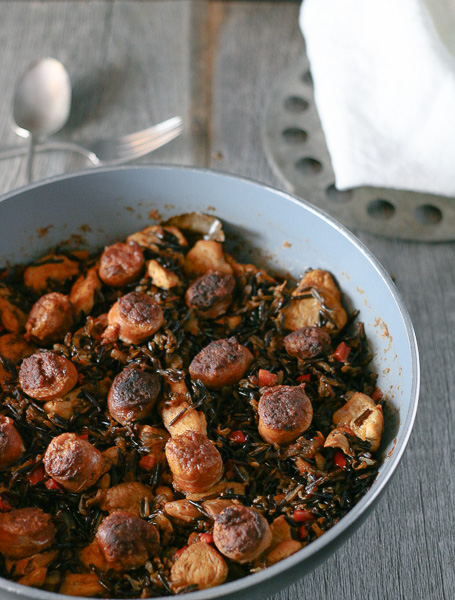
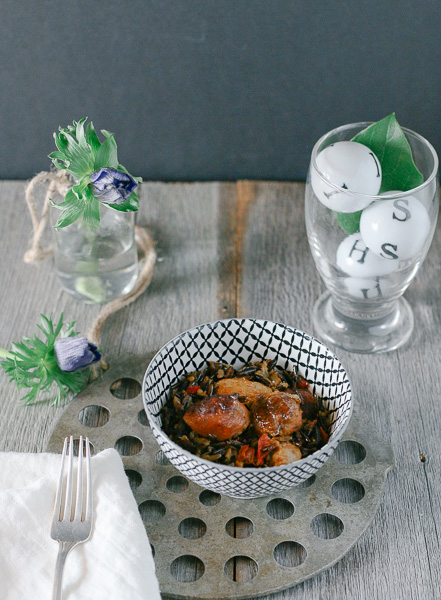
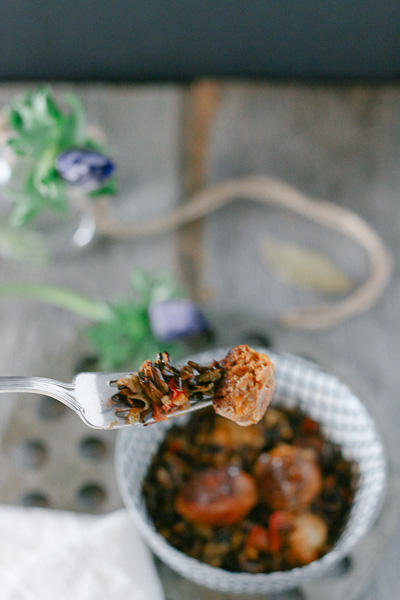
Paleo Paella
Delicious and easy-to-make Paleo Paella! Made with wild rice, chorizo, and saffron, this aromatic dish is sure to please!
- Prep Time: 20 mins
- Cook Time: 90 mins
- Total Time: 1 hour 50 minutes
- Yield: 8 servings 1x
Ingredients
- 6 cups chicken stock
- 3 pinches saffron
- 1 pound chicken thighs, cut into bite-sized pieces
- 1 1/2 pound chorizo sausages, sliced into rounds
- Olive oil
- 1 onion, diced
- 1 red pepper, diced
- 2 garlic cloves, minced
- 2 cups wild rice
- 1 tbsp tomato paste
- 1 tbsp paprika
- 1 tsp cumin
- 2 dried bay leaves
- 1 tsp coarse salt
- 1 tsp oregano
- Salt and pepper, to taste
Instructions
- Heat 2 cups of chicken stock in a small pot with the saffron until just below a simmer. Heat the remaining 4 cups of chicken stock in a second pot.
- In a third larger pot or deep frying pan, cook the sausages over medium until just cooked. Set aside.
- Using the sausage fat, plus some extra olive oil, cook your chicken thighs. Set aside.
- Pour some more olive oil to the pan/large pot, and reduce the heat to medium-low. When the oil is hot, sauté onions until translucent and golden.
- Add diced peppers. Cook until soft, about 5 minutes.
- Now, add the garlic. Cook for a further 30 seconds-1minute, or until fragrant.
- Add the wild rice, and stir until the rice is covered by oil and shiny. If you prefer a richer taste, you could add another tsp or 2 of olive oil.
- Next, add the tomato paste, paprika, cumin, bay leaves, oregano, and salt. Stir until combined.
- Add the chicken and chorizo back to the pan.
- Now on to the stirring part. Add one cup of regular chicken stock, and stir occasionally until absorbed.
- Add one cup of the saffron chicken stock. Stir yet again until absorbed.
- Add the second cup of the saffron chicken stock. Stir occasionally until absorbed.
- Continue adding stock 1/2-3/4 cup at a time, waiting until it is absorbed before adding more.
- Once rice is ‘al dente’, add one more 1/2 cup of chicken stock and stir until absorbed.
- Season to taste with salt and pepper.
- Enjoy!
Notes
- Make sure you get some quality chorizo sausages. They will make all the difference to the taste of the Paella.
- Don’t skimp on the oil with this recipe. It’s what makes this dish so deliciously rich!
- Contre Mum, you don’t actually have to stir the entire time (unless you have rowdy kids you want to torture. Then I’m all for it)! Just make sure someone stirs the pot every now and again.
- If you’re a die-hard Paleo-er, you can substitute the olive oil for coconut oil (or ghee if you allow yourself that luxury).
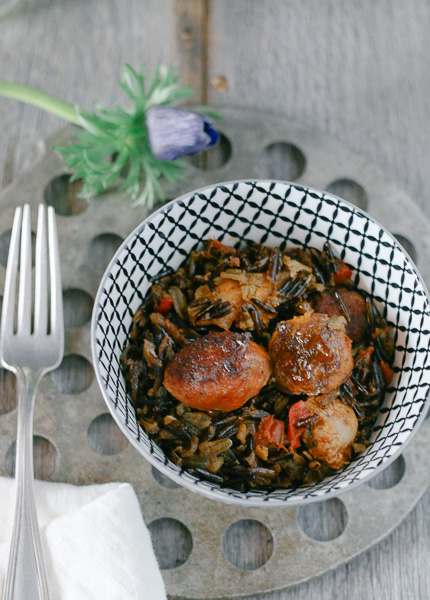
Per usual, if you guys have any questions or comments, please do not hesitate to leave a note below, or send me an email!
Ciao for now folks!
